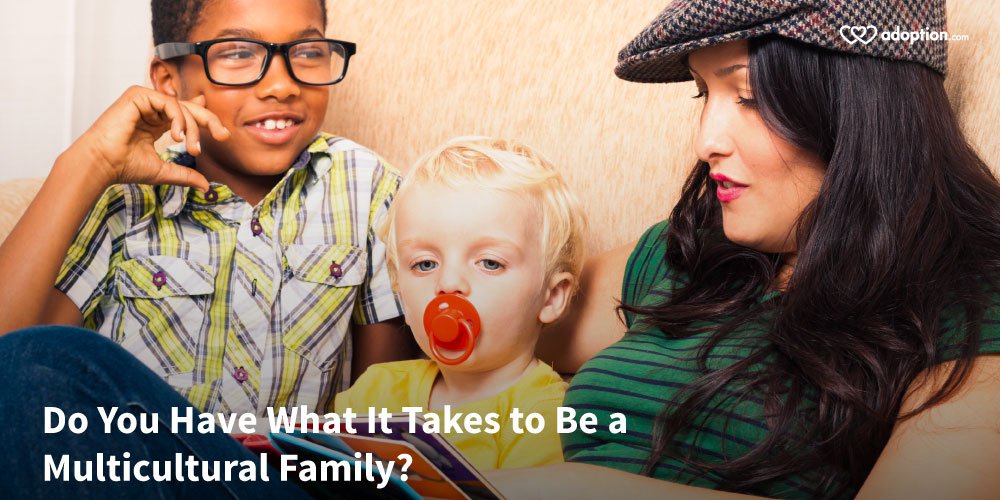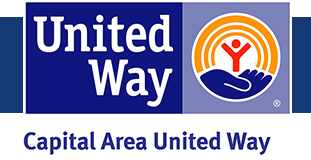These 7 questions will help you assess whether you’re ready to adopt transracially or cross-culturally.
Maya Brown-Zimmerman — March 22, 2016

As parents, we like to think that love is enough. If we just love our children hard enough, it’ll make up for whatever pitfalls we have in our parenting. If we tell our children we love them every day, they’ll always feel it.
But in adoption, we know that love isn’t enough. Adoption is born from loss, and that loss has to be addressed. Adopting transracially takes this to another level. You may think, “I could love any child, the race doesn’t matter,” or, “It’s racist to have a preference on your future child’s ethnicity,” and so say you’re open to a child of any ethnicity.
Please remember, though: a child who is adopted into a family of a different race needs more than love and good intentions. They need racial mirrors. They need to be allowed to talk about race. They need parents who will be sensitive to their birth culture’s mores. They need parents who understand white privilege and how that affects their children of color, both when they are with them and when their children are alone.
Before you make a decision as to what ethnicities you’re open to, consider the following, andthen ask yourself “Do I have what it takes to be a multicultural family?” These questions come from conversations I’ve had and observed with transracially adopted adults since adopting my daughter.
1. Do I have friends—real friends—of the ethnicity of the child I could adopt? It’s said over and over, but your child should not be your first black/latino/etc. friend.
2. Do I live in a diverse area? Specifically, are there many people of my future child’s ethnicity in my town/school district? If not, am I willing to move? It is SO important that kids have access to racial mirrors (meaning people who look like them) of all ages. I’m not adopted, but I am biracial: latina and white. I grew up in a very white area (literally, the census at the time showed 96.75% of residents were white, with only 1.14% latino of any race). Not having classmates of my ethnicity or culture was frustrating at times, and that was with having parents at home who looked like me. Because of this experience, the racial makeup of my children’s schools was one of my top considerations when we bought a house a few years ago. I love that my daughter will have many friends who look like her when she starts school! Besides racial mirrors, I’m grateful that I live somewhere it’s easy to get a variety of products for my daughter’s hair, and where she can go to a salon with knowledge about how to care for her hair when she is older. Access to food, music, and cultural events are other important aspects of living in an area where your child’s birth culture is more prominent.
3. Am I comfortable talking about race? It’s important to talk about race! We should not strive to be colorblind, which comes from a point of white privilege (if you haven’t heard of that term, definitely Google it!), but to acknowledge the differences. If we’re comfortable talking about race, our kids will feel comfortable asking questions and expressing their feelings. Whether we talk about it or not, our kids are aware that they’re a different color from their parents, and they can’t escape the stereotypes that society places on them for how they look.
4. Do I understand the importance of the Black Lives Matter movement? This is important whether you’re considering adopting an African American child or not. The essence of this movement is that there is a group of people in our country not being treated equally. If you’re responding with “but ALL lives matter,” you’re dismissing the real struggles of people of color (POC). They’re not saying that white lives don’t matter, they just want THEIR lives to matter TOO. Before adopting transracially, you need to understand that your child will NOT have all the same privileges as a white person, and hopefully you’ll want to advocate for that to change. We have a duty to.
5. Am I comfortable calling out racism, both blatant and subtle? Your child needs you to stand up for them. Their feelings of comfort come first. As you learn more about racial injustices in this country, you’ll start seeing racism in ways that maybe you didn’t before. Don’t let even the microaggressions slide. This might be outside of your comfort zone now, and will likely take practice, but you need to be willing to stretch yourself for the sake of your kids.
6. How comfortable will my extended family be with us adopting transracially, and am I willing to limit my family’s time with them if they’re not? Am I willing to lose family or friends who refuse to understand? Your child has a right to feel safe in their home and with the people closest to them. They shouldn’t be subjected to people in their lives who are racist. Your best friend/cousin/parent may not think they’re being racist, but if they’re not willing to learn why their comments or actions are inappropriate and make changes, they’ve got to go.
7. Am I willing to reach out to people of my child’s ethnicity, truly listen, and learn? Even if you answer yes to questions 1 and 2, this is vital. I’ve joined a few Facebook groups since bringing our daughter home and I learn something new all the time, just by having a wide pool of people to talk with. Last week, I learned that in my daughter’s birth culture, it’s really important for babies to wear some kind of shoes when they’re outside of the house. I didn’t put my biological sons in shoes until they were walking, but I immediately bought a couple pairs of soft-soled shoes for my daughter. She’s going to stick out, having a family that doesn’t look like her. I see one of my jobs as doing everything I can to make it so that she can be comfortable fitting in with her birth culture. Shared experiences, even ones like wearing baby shoes, are important for that.
Take time to read the words of adult adoptees. There are several great Facebook groups for various aspects of transracial adoption, plus a number of blogs. If you have Netflix, look up the documentary Closure. Know that above all, your preference list should be about what is best for your future child, not what will bring a child to your home fastest. Then you’ll know if you have what it takes to be a multicultural family.




